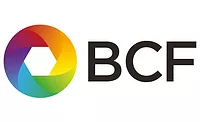Editors View: Cost of Raw Materials
This sets up another well-known economic condition, an increase in demand for a limited supply of materials. Of course when the demand increases and the supply is limited, the price begins to climb. In recent months, the cost of resins, pigments and other paint components have climbed significantly, in some cases double what they cost a short time ago. This means that the paint and powder manufacturers are faced with such large price increases that they can no longer absorb them and their prices must be increased to offset the higher price of the raw materials.
During the recent years of soft economy, price increases have been hard to sell. Competition for sales has been fierce and suppliers were reluctant to increase the unit cost of the product. But with the across-the-board increases in the cost of their raw materials, it is no longer possible to hold the unit cost of the product, and now many suppliers are being forced to ask for a price increase.
Will coaters accept price increases? Will some suppliers hold the line and continue to supply at the old price? Will price increases have any impact on an economy that is still in the early stages of recovery? These are good questions that we do not have clear answers to at the present time. But we can reasonably predict that the downward trend in the unit price of paint and powder has probably bottomed out and will begin to go up in the face of these inflationary pressures.
Some signs show sustained growth that could contribute to the ability of coating manufacturers to absorb these increases:
- Throughout the recession, a lot of capital still existed that could be put to use if the demand warranted spending for updating systems or hiring new people.
- A prolonged period of limited spending on capital improvement and hiring has created some pent-up demand.
- The industrial sector has shown improvement and continues to improve in spite of the job losses and other negative news in the past few years.
Other issues that could affect the economy are not as encouraging:
- The U.S. trade deficit, now at a record $55 billion, increases U.S. borrowing to buy foreign-made goods and creates record debt, which puts downward pressure on the dollar and results in pricey imports at home.
- A return to deficit spending has increased the national debt to $7,540,331,252,169.52. With the U.S. population at 295,193,902, that works out to $25,543.66 per person and climbing.
- Consumer debt is at an all-time high. This may take money out of the market to pay the debt down and reduce the surging demand.
So it remains to be seen if the market forces will persevere and win out over the excesses of government. In the meantime, do not be surprised if your paint or powder supplier sends you a letter announcing a price increase.
Looking for a reprint of this article?
From high-res PDFs to custom plaques, order your copy today!







